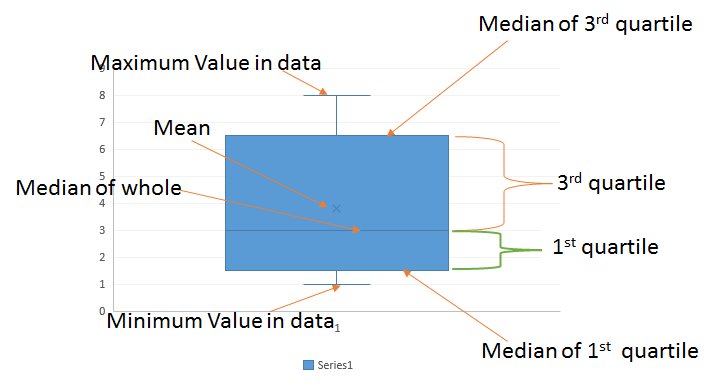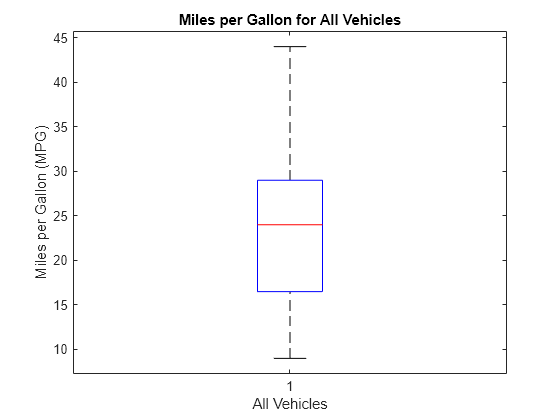

It is easy to see that males and females typically spend on average different amounts on the total bill for date night except on Saturday. Boxplots make comparing the measures of data much more efficient.
#Box and whisker plot example how to
Now that we have discussed how to read the boxplot, let talk about how to interpret it like really good stats students! Let’s take a look at something more interesting than trees… date night! We are going to look at how much of the total bill men and women pay on a given date on common date nights.įirst, notice that there are two sets of boxplots: one for males and one for females. If we were conducting some sort of study, we could say that this tree is statistically different from the other trees by assigning it a z-score. This means that this particular data point is unusual and does not fit the data set for some reason. Now we come to that little open dot at the very furthest right. These lines were formerly called the whiskers of the plot, but statisticians have since reduced the name to the much less adorable boxplot. These lines give you an idea of the range of the data. So our tallest normal tree is a whopping 110 inches. The line at the furthest right represents the highest value in the data. In the case of our trees, the smallest is about 30 inches tall. The line at the furthest left represents the lowest value in the data. We’ll talk about how really useful this box is in just a minute. It represents 50% of data points between the 1st and 3rd quartiles. Hence the reason I supplemented the data. Just so you know, in a typical data set without supplemented data, you may not see that little dot because it should be close to the median value. Remember from long, long ago in a post far, far away that the mean is actually a statistical model that represents the data. The mean value of the data may not always be an actual value in the data. The dot beside the line, but still inside the yellow box represents the mean value of the data. On the graph, the vertical line inside the yellow box represents the median value of the data set. The Basics of the Boxplotįirst, let’s look at a boxplot using some data on dogwood trees that I found and supplemented.

It also shows a few other pieces of data. Recall that the measures of central tendency include the mean, median, and mode of the data. One wicked awesome thing about box plots is that they contain every measure of central tendency in a neat little package. By John Clark on Januin Descriptive Statisticsīox plots, or box-and-whisker plots, are fantastic little graphs that give you a lot of statistical information in a cute little square.


 0 kommentar(er)
0 kommentar(er)
